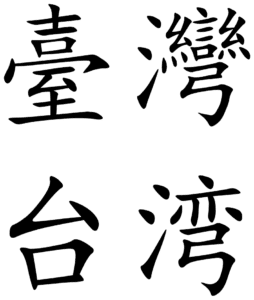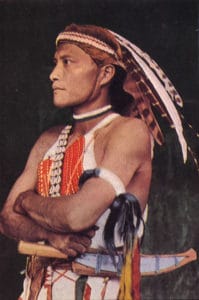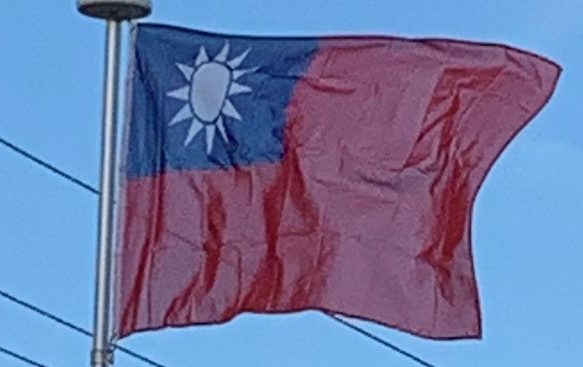
In the early 17th century, the Dutch East India Company established a commercial post at Fort Zeelandia (modern-day Anping, Tainan) on a coastal sandbar called “Tayouan”, after their ethnonym for a nearby Taiwanese aboriginal tribe, possibly Taivoan people, written by the Dutch and Portuguese variously as Taiouwang, Tayowan, Teijoan, etc. This name was also adopted into the Chinese vernacular (in particular, Hokkien, as Pe̍h-ōe-jī: Tāi-oân/Tâi-oân) as the name of the sandbar and nearby area (Tainan). The modern word “Taiwan” is derived from this usage, which is seen in various forms (大員, 大圓, 大灣, 臺員, 臺圓 and 臺窩灣) in Chinese historical records. The area occupied by modern-day Tainan represented the first permanent settlement by both European colonists and Chinese immigrants. The settlement grew to be the island’s most important trading center and served as its capital until 1887.
Use of the current Chinese name (臺灣) became official as early as 1684 with the establishment of Taiwan Prefecture. Through its rapid development the entire Formosan mainland eventually became known as “Taiwan”.
Over subsequent decades, the Republic of China has become commonly known as “Taiwan”, after the island that comprises 99% of the territory under its control. In some contexts, especially ROC government publications, the name is written as “Republic of China (Taiwan)”, “Republic of China/Taiwan”, or sometimes “Taiwan (ROC)”.
The Republic of China participates in most international forums and organizations under the name “Chinese Taipei” due to diplomatic pressure from the People’s Republic of China. For instance, it is the name under which it has competed at the Olympic Games since 1984, and its name as an observer at the World Health Organization.
History:
Prehistory:
Taiwan was joined to the mainland in the Late Pleistocene, until sea levels rose about 10,000 years ago. Fragmentary human remains dated 20,000 to 30,000 years ago have been found on the island, as well as later artifacts of a paleolithic culture.
Around 6,000 years ago, Taiwan was settled by farmers, most likely from mainland China. They are believed to be the ancestors of today’s Taiwanese aborigines, whose languages belong to the Austronesian language family, but show much greater diversity than the rest of the family, which spans a huge area from Maritime Southeast Asia west to Madagascar and east as far as New Zealand, Hawaii and Easter Island. This has led linguists to propose Taiwan as the urheimat of the family, from which seafaring peoples dispersed across Southeast Asia and the Pacific and Indian Oceans.

Han Chinese fishermen began settling in the Penghu islands in the 13th century. Hostile tribes, and a lack of valuable trade products, meant that few outsiders visited the main island until the 16th century. During the 16th century, visits to the coast by fishermen and traders from Fujian, as well as Chinese and Japanese pirates, became more frequent. The Kingdom of Middag that existed from before the Portuguese and Spanish colonial period was a supra-tribal alliance located in the central western plains of Taiwan that was brutally conquered by Qing troops and collaborative indigenous communities in 1732.
17th Century:
The Dutch East India Company attempted to establish a trading outpost on the Penghu Islands (Pescadores) in 1622, but were driven off by Ming forces. In 1624, the company established a stronghold called Fort Zeelandia on the coastal islet of Tayouan, which is now part of the main island at Anping, Tainan. When the Dutch arrived, they found southwestern Taiwan already frequented by a mostly-transient Chinese population numbering close to 1,500. David Wright, a Scottish agent of the company who lived on the island in the 1650s, described the lowland areas of the island as being divided among 11 chiefdoms ranging in size from two settlements to 72. Some of these fell under Dutch control, while others remained independent. The Company began to import laborers from Fujian and Penghu, many of whom settled.
